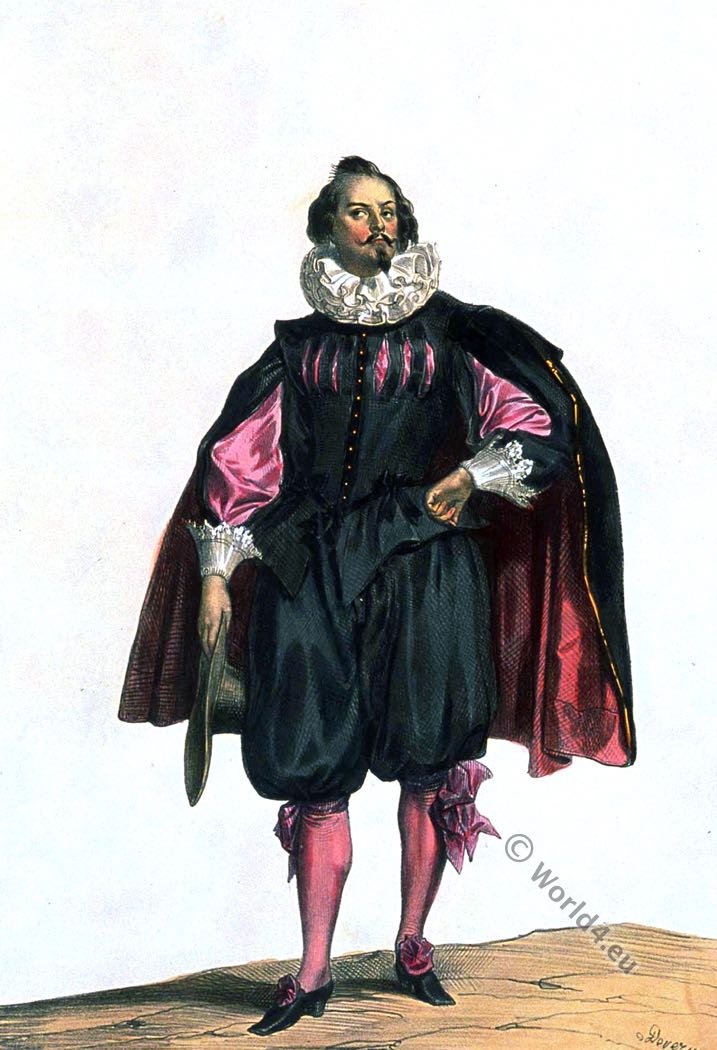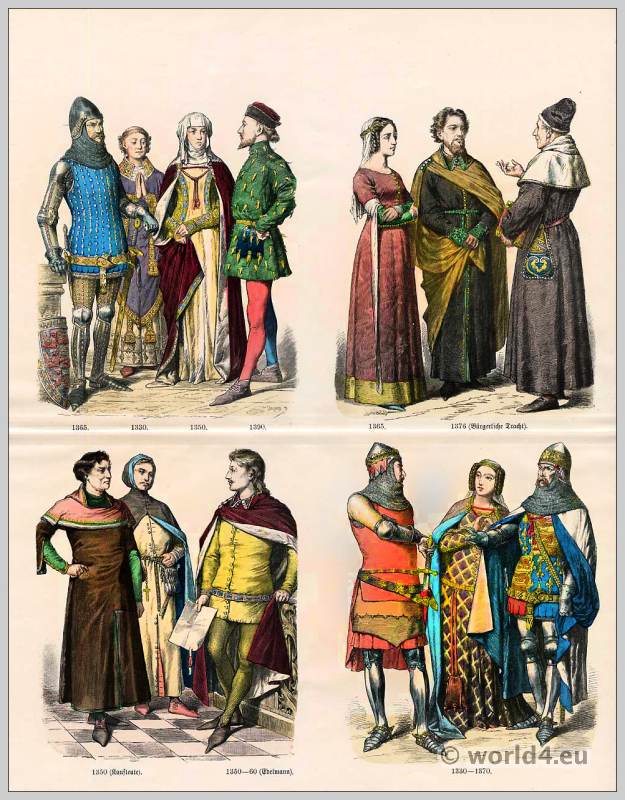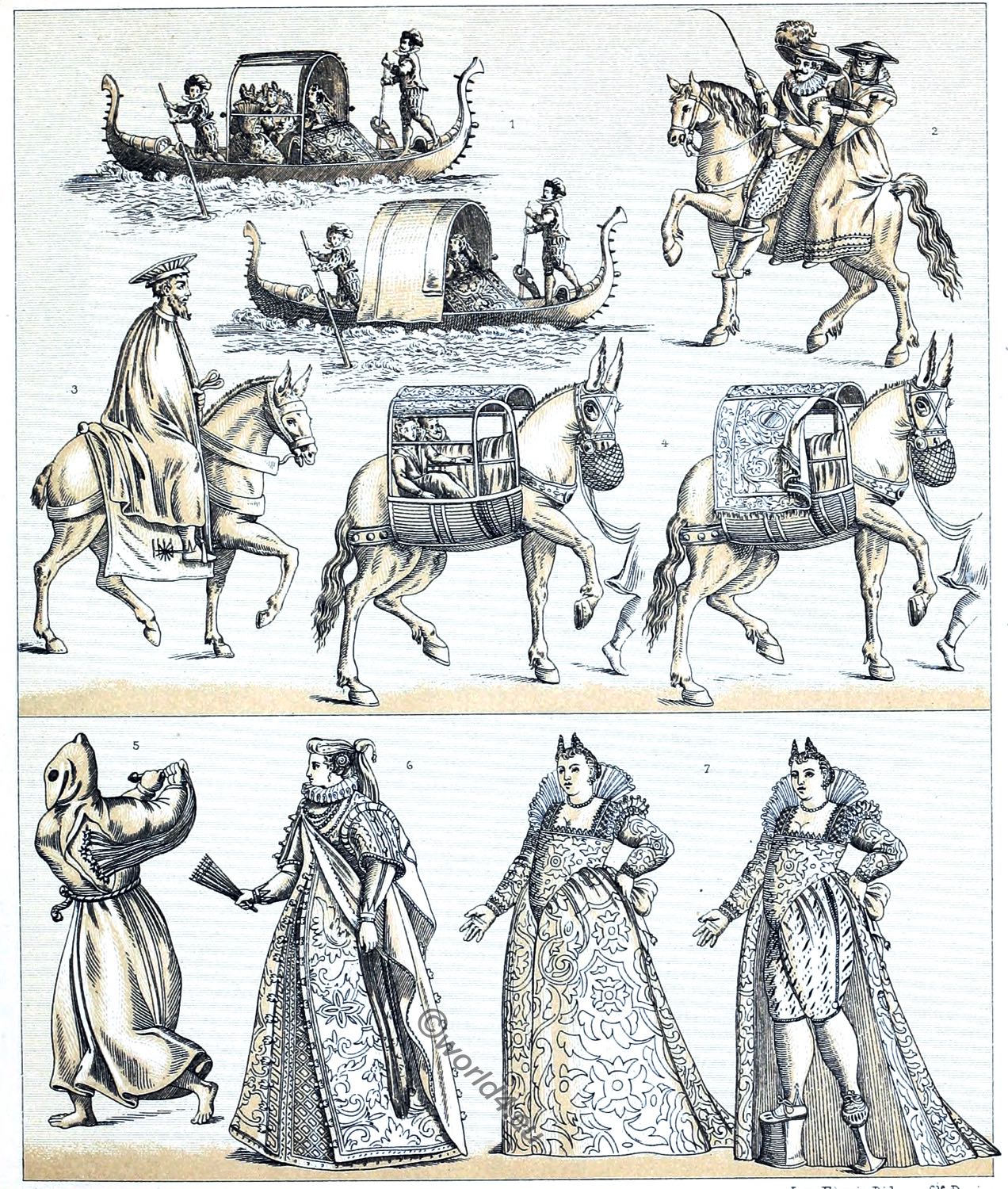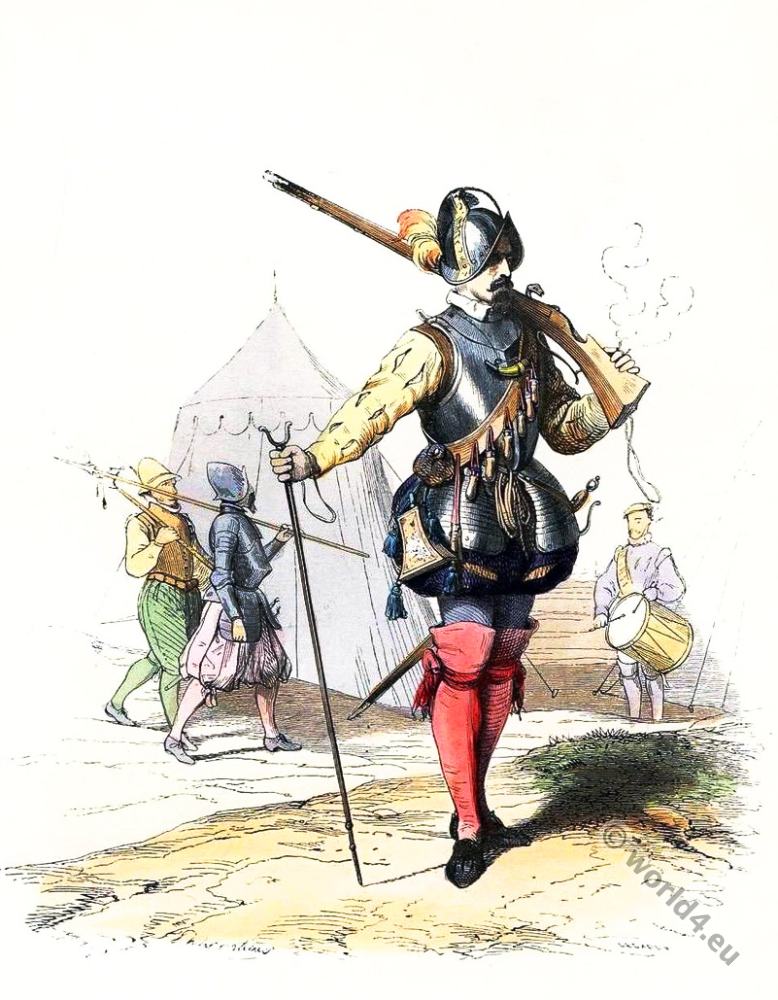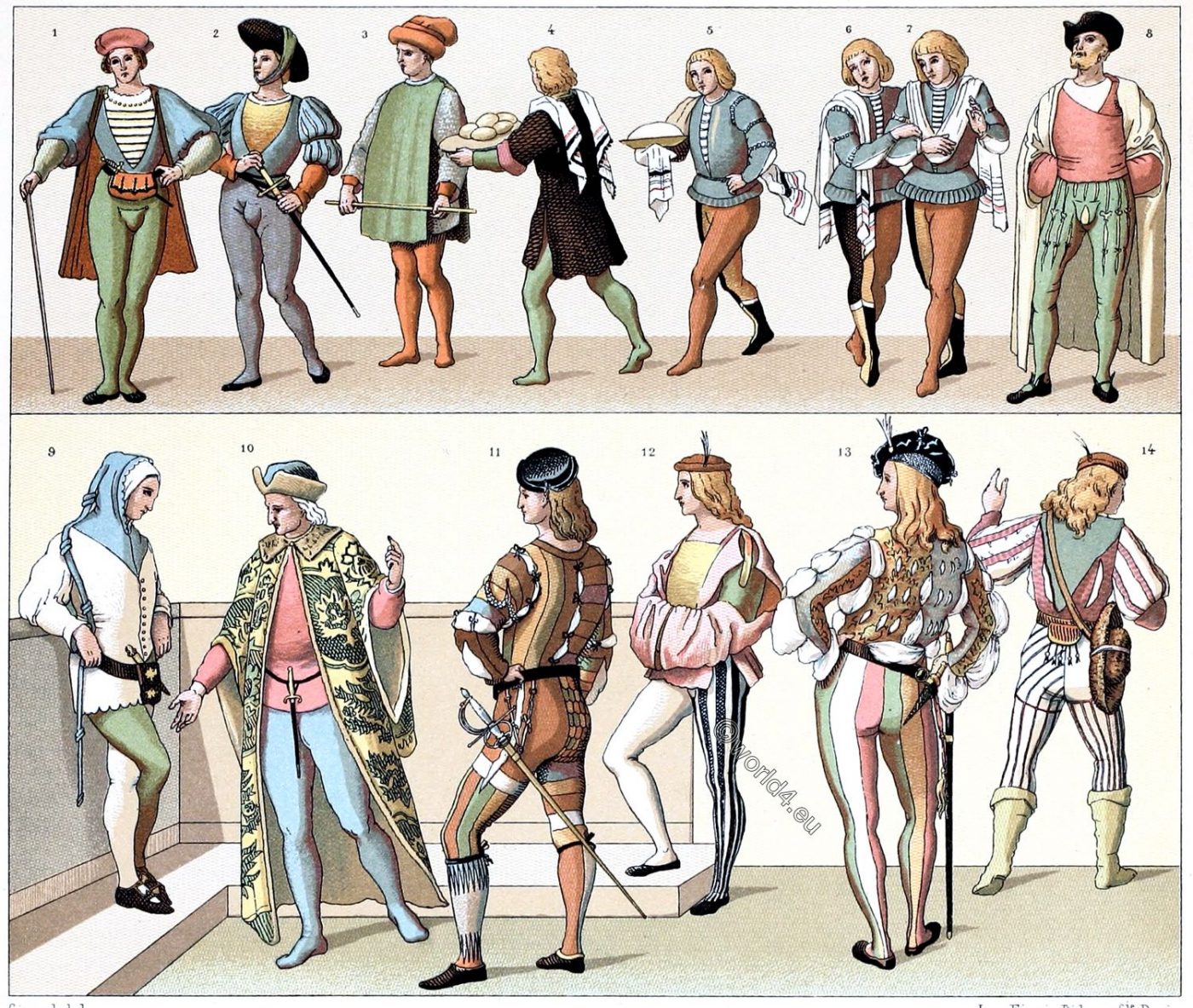
Civil and military fashion & costume in Italy. 14th, 15th, 16th c.
CIVIL AND MILITARY DRESS OF THE NOBILITY.
A CONDOTTIERE. – HOUSE OFFICERS.
In the XII. Century the production of precious fabrics was brought from the Orient to Lucca Piacenza, Pisa and Florence. In the 15th century luxury reached its highest level especially among the Venetian nobility.
BOURGEOIS COSTUME.
No. 9. Nobleman; end of the 14th century. Fresco by the northern Italian painter Guariento di Arpo (c. 1310-1370), Choir of the Hermits; Padua. Blue cap with a long hanging, multiple knotted tip over a white bonnet. White doublet with gold buttons and puffed sleeves at the top and narrow sleeves at the bottom. Belt with gold embroidered pocket and dagger. Trousers, split, made of green and white silk. Velvet shoes with gold embroidery.
Number 10. Noble Fleming; 15th century. From a painting by Hans Memling (born between 1433 and 1440 -1494); Pinakothek in Turin. Blue velvet cap with fur trimming. Silk doublet with belt, from which a dagger hangs down in front. Lined coat, open from neck to feet. Pants of blue silk.
No. 12. Venetian nobleman; 15th century. Painting by Giovanni Bellini; Academy in Venice. Street costume. On the curly hair a feather beret according to Florentine and Milanese fashion. Overskirt of pink silk with yellow silk bust and long slit sleeves showing the Gavardtina, a kind of waistcoat made of green fabric. Venetian-style divided trousers.
No. 8. Venetian nobleman in winter costume; end of the 15th century. Painting by Giorgio da Castelfranco (1478-1510); Uffizi in Florence. Felt hat with open brims. Vest-like doublet. Trousers with pubic capsule and slits closed by cords. White cloth coat without sleeves with openings to put the arms through. Shoes of dyed leather.
No. 13. Mignon; beginning of the 16th century. From a fresco by Sodoma; Monastery Monte Oliveto Maggiore near Siena. The Abbey of Monte Oliveto is the ancestral monastery and the seat of the General Abbot of the Olivetans, a Benedictine branch order. Above the green silk hairnet is a Florentine beret with sewn-on decorations. Velvet doublet, half gold and half silver brocade, slit. Leather belt with dagger. Long sword with red silk strap ending in a tassel. Divided trousers.
MILITARY COSTUME.
No. 2. Nobleman; end of the XV century. Fresco by Pinturicchio (c. 1452-1513); Libreria in Siena. Chin strap, enclosing a hat. Neckless doublet with puffed sleeves, the heart-shaped neckline of which reveals a kind of waistcoat of yellow silk. The sword on the defence pendant. Pants with pubic capsule.
No. 11. Officer in parade; early 16th century. Fresco by Luca Signorelli (ca. 1450-1523); Monte Oliveto Monastery (Cattedrale di Santa Maria Assunta). Beret with diagonal mount; split doublet with slits on the back, shoulders and sleeves. Around the left upper arm a kind of triple bracelet of large pearls, held by three red silk nests. Leather belt and knotted military pendant. Divided trousers.
No. 14. Venetian Condottiere; 16th century. Fresco by Domenico Campagnola (around 1500-1564). Berett with feather. Longhaired hat on a strap. Slitted doublet with puff sleeves. Hood. Leather belt with small pocket in the back. Split trousers. Yellow leather boots.
HOME OFFICERS. SQUIRE.
No. 3. House officer; end of the 14th century. From a manuscript in the monastery of San Marco in Florence. Hood with open band; green hoqueton over a chain mail shirt; red trousers: as badge a staff. The hoqueton is a gown made of a large cloth quilted with felt, fairly short and sleeveless. Its name comes from the Arabic al-qoton, meaning ‘cotton’. From 1370 onwards, men-at-arms and infantrymen adopted hoquetons as a replacement for chain mail. It can stop light arrows. The hoqueton are used as intermediate underwear for knights, placed under the haubert, then from 1660 under the brigandine (with curved plates). Another piece of fabric, the surcot, is placed over this armour to attenuate the effect of the sun.
No. 1. Officer in the pope’s entourage; 15th century. Fresco by Pinturicchio; Libreria in Siena. Red hat with open and slit rim. Blue, regularly pleated Mantellino, held by a chain. Doublet with chest cutout revealing the pleated shirt. Over sleeves in pearl grey silk. Belt with pocket and dagger. Pants with pubic capsule. Shoes.
No. 4. Squire; 15th century. Painting by Beato Angelico (also Fra Angelico between 1386 and 1400 – 1455). Napkin around the neck; dark dalmatica with ponceau lapel; green trousers.
Number five, six, seven. Squires of the same time. Painting by Domenico Ghirlandajo (1448 – 1494) in the Collegiata in Empoli. White napkin: doublet with small lapels of blue passementarie. Divided trousers.
Watercolours by Stephan Baron. Cf. Vecellio, Costumes anciens et modernes, Paris 1859.
Source: History of the costume in chronological development by Auguste Racinet. Edited by Adolf Rosenberg. Berlin 1888.
Related
Discover more from World4 Costume Culture History
Subscribe to get the latest posts sent to your email.

